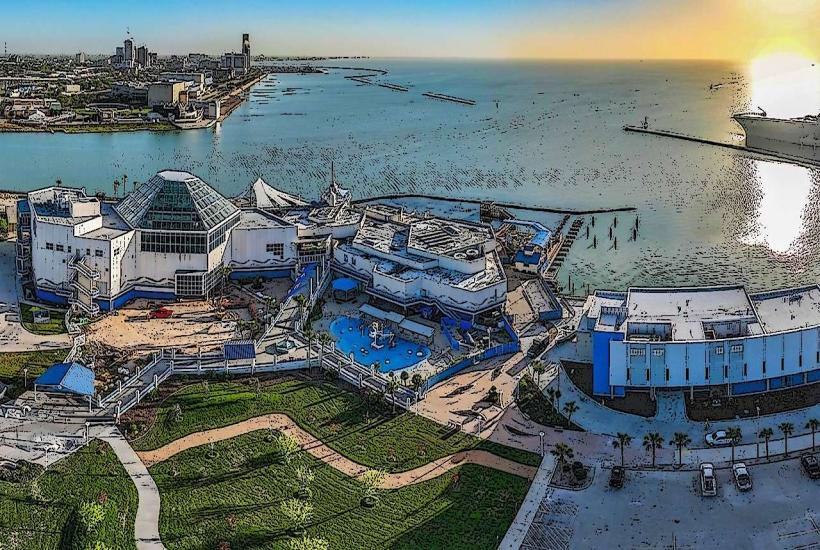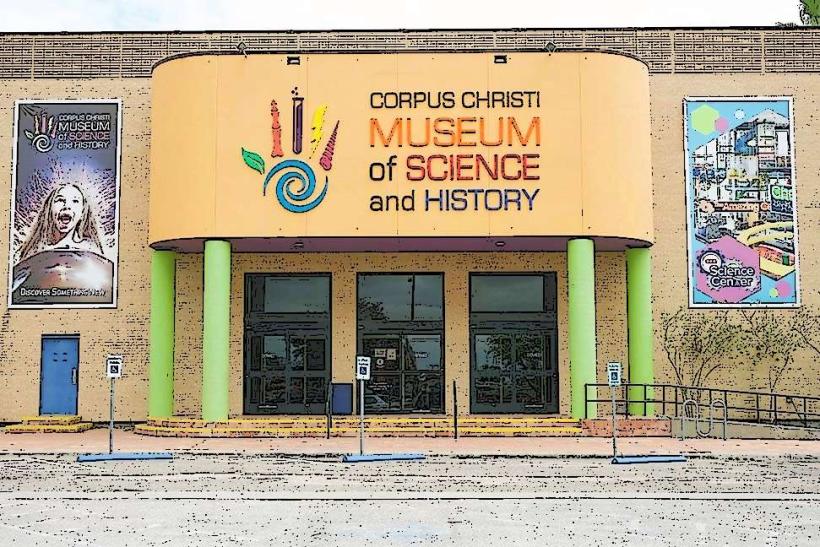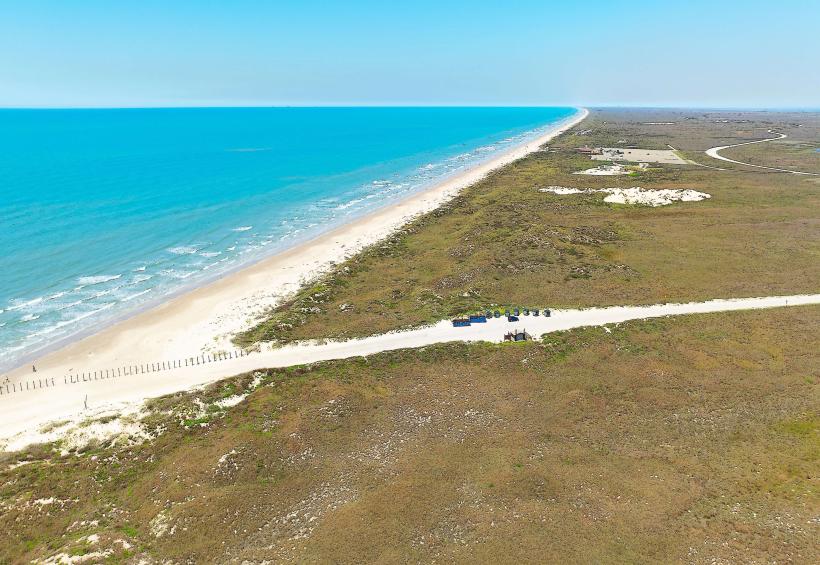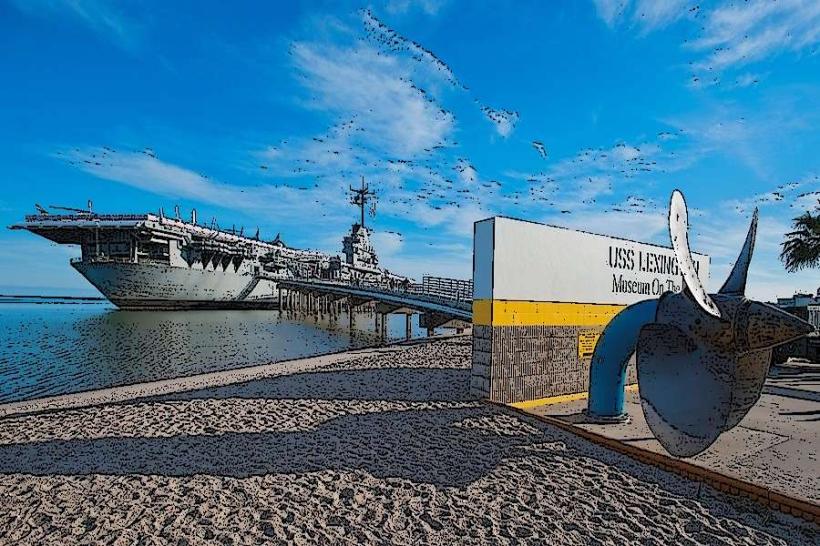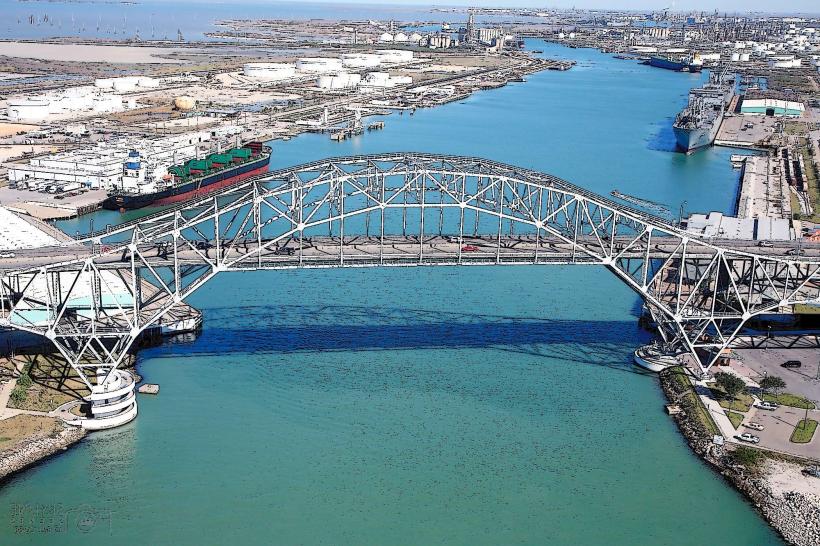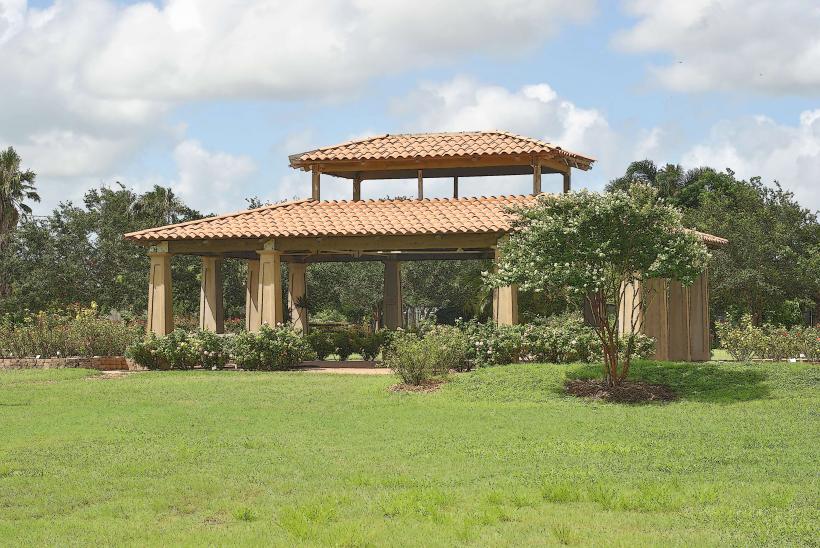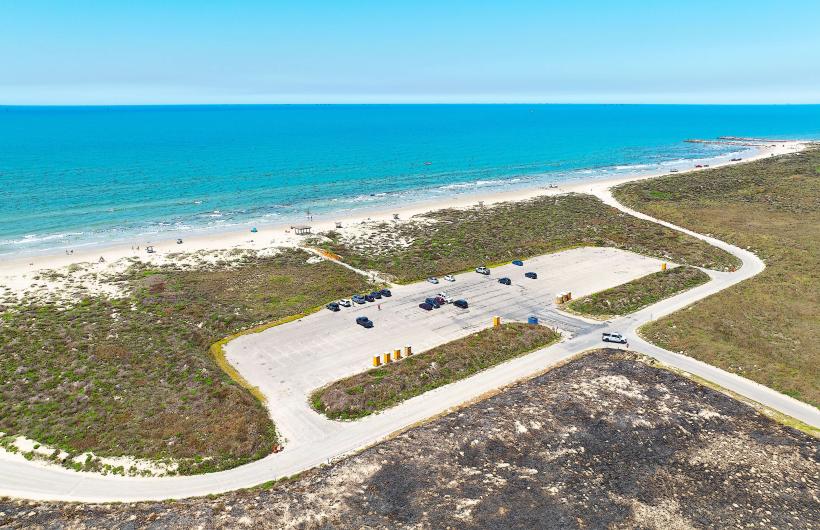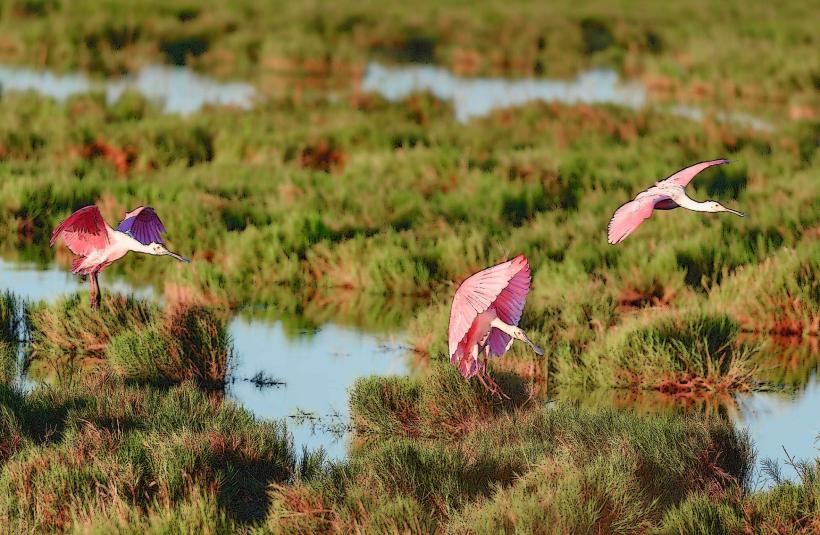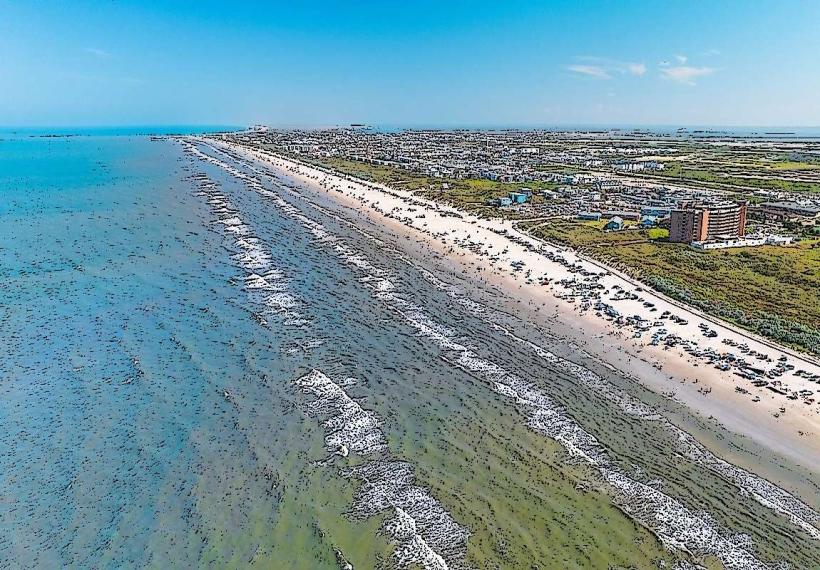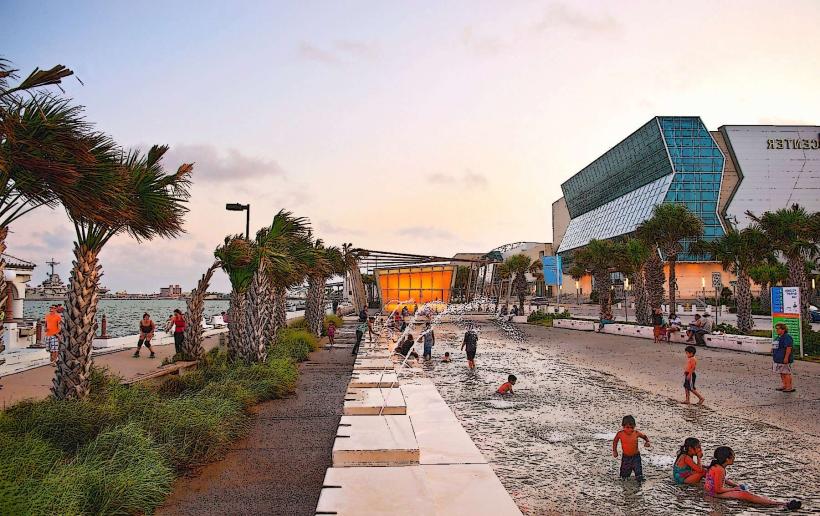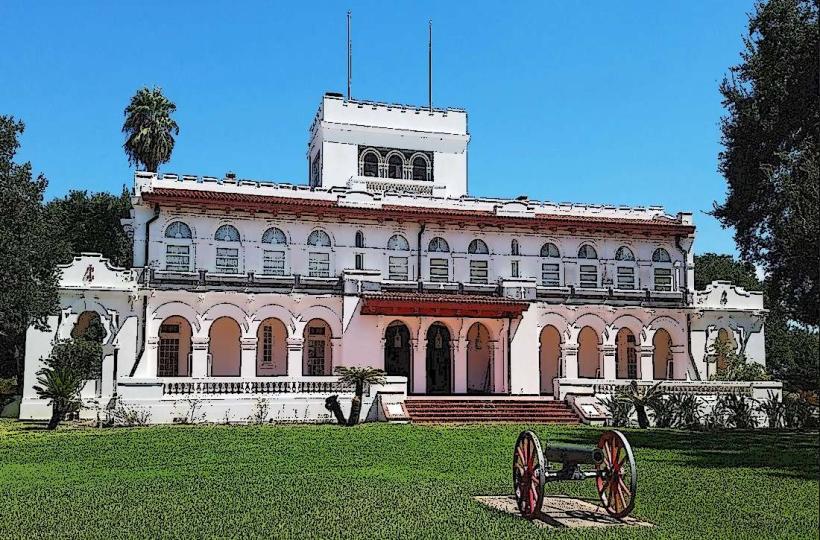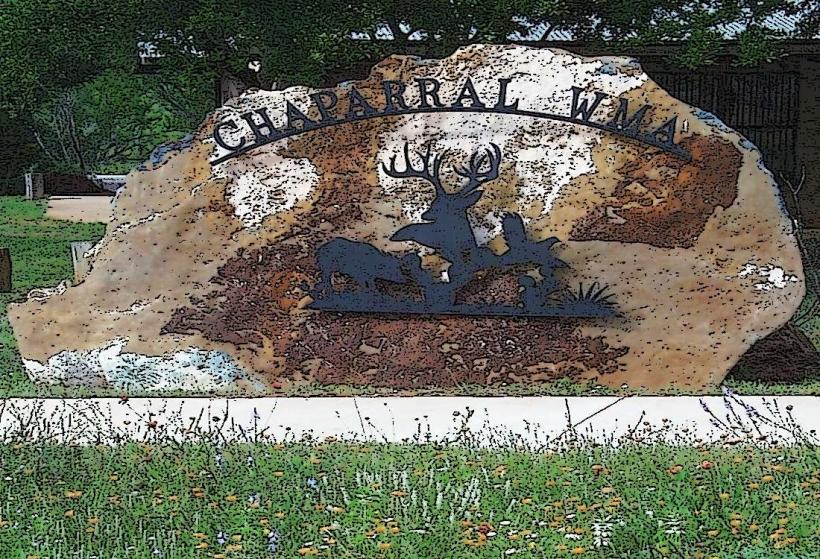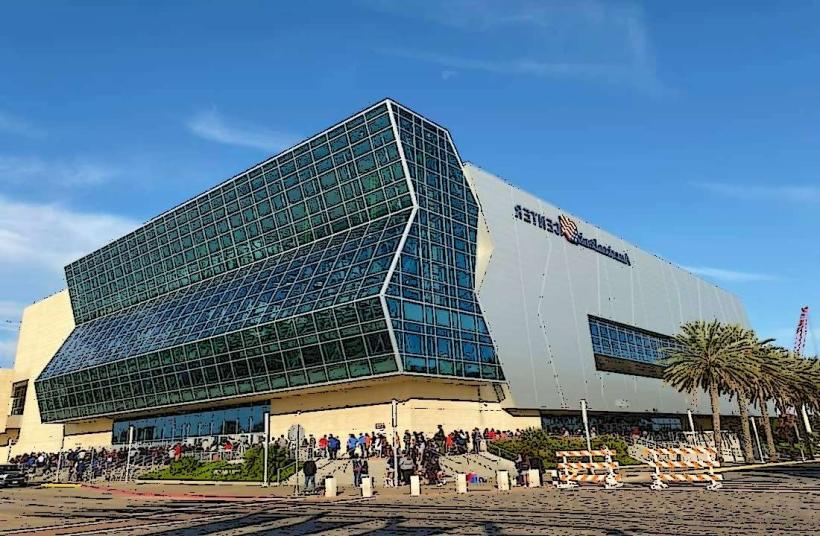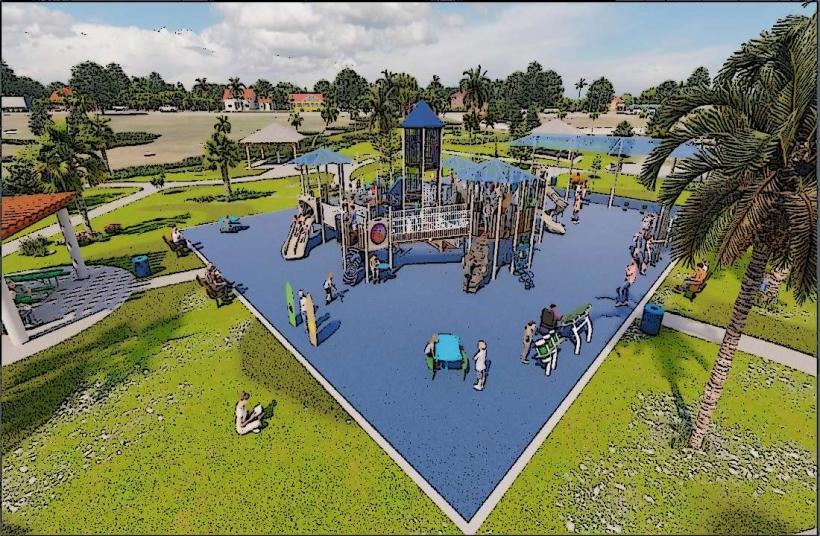Information
City: Corpus ChristiCountry: USA Texas
Continent: North America
Corpus Christi, USA Texas, North America
Corpus Christi is a coastal city in South Texas, situated along the Gulf of Mexico, known for its important role in Texas maritime commerce, its naval and aerospace facilities, and its relaxed coastal lifestyle. Often called the "Sparkling City by the Sea," it blends urban development, cultural heritage, military significance, and beachside recreation. Corpus Christi serves as a key port city, a popular tourist destination, and a gateway to South Texas and the Gulf Coast.
Here is a detailed overview of Corpus Christi:
1. Geography and Location
Corpus Christi lies on the southern coast of Texas, within Nueces County, and is bordered by Corpus Christi Bay, Oso Bay, and the Gulf of Mexico.
Bayfront City: The city is built along several bays, including Corpus Christi Bay, providing scenic waterfront views, recreational areas, and a natural harbor.
Barrier Islands: Padre Island and Mustang Island, located to the east, shield the bay from the open Gulf and host beaches, resorts, and natural reserves.
Estuaries and Wetlands: The area includes diverse ecosystems like the Laguna Madre, a hypersaline lagoon known for its unique marine life and bird habitats.
2. Historical Background
Corpus Christi has a long and varied history, marked by exploration, conflict, and maritime development.
Indigenous Inhabitants: The Karankawa people originally inhabited the area, living off the rich coastal environment.
Spanish Exploration: The name "Corpus Christi" (Latin for "Body of Christ") was given by Spanish explorer Alonso Álvarez de Pineda in 1519, when he discovered the bay on the Catholic feast day.
Mexican and Republic Eras: During the 1800s, the area became a trade point. In 1839, it was formally settled and later played a role in the Mexican–American War as a staging point for U.S. forces under General Zachary Taylor.
Growth and Incorporation: The city was incorporated in 1852 and saw significant development with the arrival of railroads and port expansion in the early 20th century.
3. Economy
Corpus Christi's economy is diverse, with strengths in energy, shipping, military, tourism, and education.
Port of Corpus Christi: One of the largest and busiest ports in the United States, especially for oil, natural gas, and agricultural products. It supports international trade and is a hub for the export of crude oil and liquefied natural gas (LNG).
Energy Sector: The city is home to several oil refineries, petrochemical facilities, and pipeline networks. Major energy companies operate here, making it a key location in the U.S. energy industry.
Tourism and Hospitality: With its beaches, cultural attractions, and warm weather, tourism plays a vital role. Visitors come for fishing, boating, birdwatching, and beach vacations.
Military: Corpus Christi hosts Naval Air Station Corpus Christi, which is a major training base for naval aviators. The base supports both military operations and the local economy.
Fishing and Marine Industry: The area supports a large shrimping and seafood industry, recreational fishing, and maritime services.
4. Cultural and Educational Institutions
Corpus Christi is a regional cultural center for South Texas.
Art Museum of South Texas: Houses collections of contemporary and regional art in a striking building designed by architect Philip Johnson.
Texas State Aquarium: One of the largest aquariums in Texas, it features marine life from the Gulf of Mexico and the Caribbean and promotes conservation and education.
USS Lexington Museum: A permanently moored World War II aircraft carrier turned museum. It serves as a major attraction and honors naval aviation history.
Selena Museum: Dedicated to the Tejano music icon Selena Quintanilla-Pérez, who was born and raised in Corpus Christi. The museum attracts fans from around the world.
Texas A&M University–Corpus Christi (TAMU-CC): A major public research university situated on its own island campus. It is known for marine science, coastal studies, and business programs.
5. Neighborhoods and Districts
Corpus Christi is divided into various neighborhoods and districts, each with its own character.
Downtown: Home to the bayfront promenade, museums, restaurants, hotels, and the American Bank Center, which hosts concerts, sports, and conventions.
North Beach: A tourist area with beachfront hotels, the USS Lexington, and the Texas State Aquarium.
South Side: A rapidly growing residential and commercial area with schools, shopping centers, and new developments.
Flour Bluff: A residential area near the Naval Air Station, with access to fishing, boating, and Padre Island.
Padre Island: Popular for vacation homes and condos, with direct access to Gulf beaches and boating channels.
6. Natural Attractions and Recreation
Corpus Christi offers extensive outdoor activities due to its coastal location and mild climate.
Padre Island National Seashore: The longest undeveloped barrier island in the world. It protects 70 miles of pristine beach, dunes, and tidal flats. It’s also a nesting site for Kemp’s ridley sea turtles and a hotspot for migratory birds.
Mustang Island State Park: Offers camping, kayaking, and beachcombing. It is less developed than Padre Island and offers a quieter beach experience.
Laguna Madre: A unique hypersaline lagoon ideal for windsurfing, fishing, and birding. It supports one of the richest saltwater fishing grounds in the U.S.
Birdwatching: The region is part of the Central Flyway, making it one of the best birding areas in North America, especially during spring and fall migrations.
7. Climate
Corpus Christi has a humid subtropical climate with warm temperatures and coastal breezes year-round.
Summers: Hot and humid, with highs often in the 90s°F (32–37°C). Gulf breezes help moderate the heat.
Winters: Mild and pleasant, with average highs in the 60s and 70s°F (15–24°C). Snow is extremely rare.
Rainfall: Moderate, with occasional heavy rains during tropical systems.
Hurricane Risk: The city is vulnerable to hurricanes and tropical storms, with preparations and evacuations occasionally necessary during storm season.
8. Transportation
Corpus Christi is well connected by road, air, and sea.
Highways: Interstate 37 connects the city to San Antonio. U.S. Highways 77 and 181 serve regional traffic.
Public Transit: The Corpus Christi Regional Transportation Authority (CCRTA) provides bus services throughout the city.
Air Travel: Corpus Christi International Airport (CRP) offers flights to major hubs including Dallas, Houston, and beyond.
Port Access: The Port of Corpus Christi accommodates large tankers, cargo ships, and commercial vessels.
9. Events and Festivals
Buc Days (Buccaneer Days): A springtime festival dating back to 1938, featuring rodeos, parades, a carnival, and live music.
Fiesta de la Flor: Celebrates the life of Selena and Tejano culture (though this event has varied in location and format over the years).
Texas Jazz Festival: A long-running, free outdoor jazz music event drawing regional and national acts.
Wings Over South Texas: An air show hosted by NAS Corpus Christi, featuring the U.S. Navy Blue Angels.
Conclusion
Corpus Christi is a multifaceted city where the natural beauty of the Gulf Coast meets the dynamic energy of a working port, a major university, and military installations. With its diverse economy, maritime heritage, and access to some of the most beautiful beaches and ecological preserves in Texas, it stands as a gateway between coastal charm and industrial strength. Whether for a beach vacation, birdwatching, historical exploration, or naval history, Corpus Christi offers a distinctive and rewarding experience.

